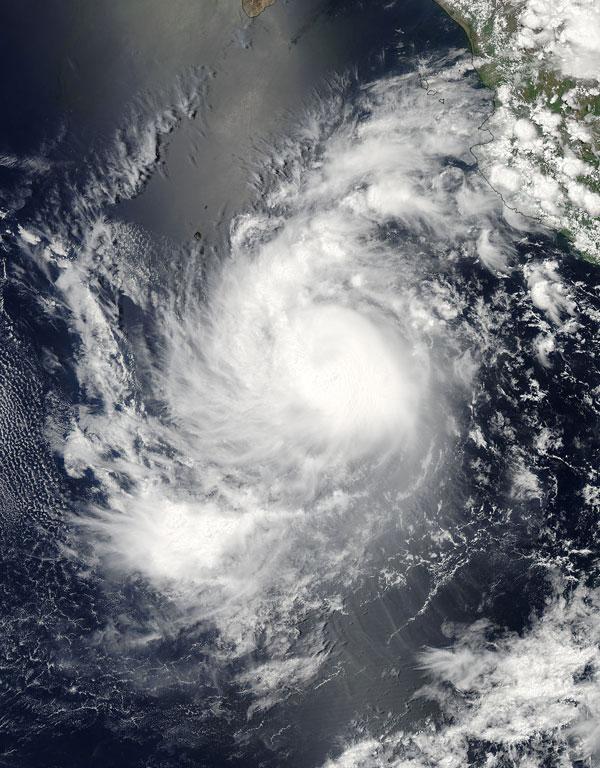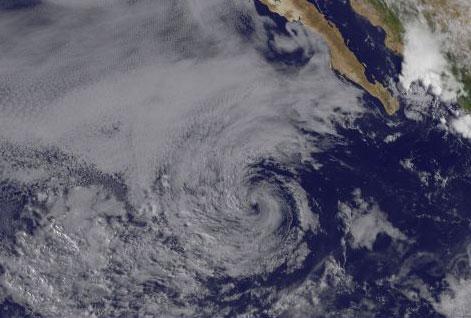Satellites Capture Quick Rise & Fall of Tropical Storm Calvin

NASA satellites watched Tropical Storm Calvin become a hurricane on July 8 and weaken quickly to a remnant low pressure area by yesterday (July 10).
Tropical Storm Calvin strengthened into a hurricane around 5 p.m. EDT on Friday, July 8 with maximum sustained winds near 75 mph (120 kph). At that time it was located about 340 miles (550 kilometers) south-southwest of Cabo Corrientes, Mexico.
On July 8, NASA's Aqua satellite passed over Tropical Storm Calvin and captured visible and infrared images of the storm. These images showed strong thunderstorms developing within Calvin, and indicated that it was a well-organized and strengthening tropical storm.
July 9, Calvin's winds weakened below hurricane strength to 57 mph (93 kmh). By July 10 at 0300 UTC (July 9 at 11 p.m. EDT), Calvin's maximum sustained winds were down to 34 mph (55 kmh), relegating it down to tropical depression status.
By July 11 at 8 a.m. EDT Calvin had degraded further as the low moved into cooler sea surface temperatures. Sea surface temperatures of at least 80 degrees Fahrenheit (26.6 degrees Celsius) to maintain the strength of a tropical cyclone, a term that encompasses tropical storms, hurricanes and typhoons.
All signs of deep, strong convection (rapidly rising air that forms the thunderstorms that would power it) are gone on satellite imagery. Its center was just west of Isla Clarion.
Visible imagery from the GOES-11 satellite at 1445 UTC (10:45 a.m. EDT) on July 11 shows the remnants of Calvin as a swirl of clouds in the eastern Pacific Ocean, several hundred miles off the western Mexico coastline. The low is expected to dissipate sometime on Tuesday (July 12).
Get the world’s most fascinating discoveries delivered straight to your inbox.
Calvin is the third named storm to form in the eastern Pacific this season. Only one named storm (tropical storms and hurricanes receive names) has formed in the Atlantic basin so far this season. Tropical Storm Arlene made landfall near Cabo Rojo in Veracruz, Mexico on June 30.





